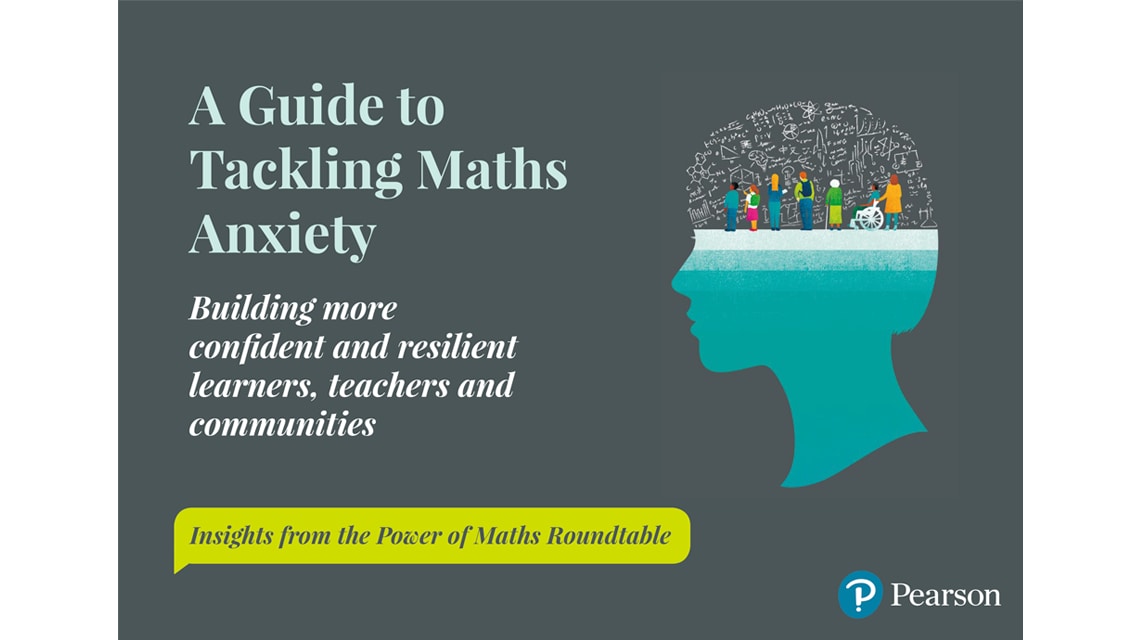Maths anxiety: a teacher’s perspective

How can you better understand and identify maths anxiety in your school? Rob Brown, a maths teacher at West Lakes Academy and panelist at our 2019 Power of Maths Roundtable, shares insights from their in-school research project.
Maths anxiety = a real problem
Let me set the scene: the start of our new academic year, with a new set of students in Year 7 walking through our doors at West Lakes Academy. Like every year, their bags will be far too full, their blazers will have growing room fit for a nearby elephant and they will be eager. New Year 7s are always eager.
My first lesson: squares, cubes, triangle numbers, pattern finding. We could use the multilink to build linear sequences or perhaps we could draw Fibonacci spirals. I am loving the thought already. But for some students this thought is already filling them with a sense of dread. A loud and scary maths teacher is about to ask them complicated questions for five years.
A proportion of students come to school absolutely petrified by mathematics. When we interview them, they talk about an intense feeling of worry particularly about being wrong. They regularly experience crises of confidence around the entirety of mathematics after one small error. Some report feelings of sickness or their heart racing. These students are experiencing maths anxiety which prohibits their learning in mathematics.
One of the first things you realise in teacher training is that if you give a class an unfamiliar problem, some will not even begin. Perhaps they are lazy or taking a liberty, perhaps the instructions were unclear. But perhaps, just perhaps, they are experiencing maths anxiety. I have truly had my consciousness raised around this issue over the last academic year. It is apparent to me that maths anxiety affects more students than I thought and has a more tangible impact on their learning than I ever imagined.
Identifying those with maths anxiety
At West Lakes Academy, we wanted to investigate the best way to help those with maths anxiety. We created a small research project, aiming to identify those with anxiety in the following ways:
- providing more than 300 students with a questionnaire, self-evaluating their anxiety levels in a variety of contexts
- asking teachers to identify 10-20% of their class who they thought exhibited most symptoms of anxiety
- comparing both the student questionnaires and teacher responses
- speaking to teachers about the symptoms they had observed
- asking students identified as 'anxious' about their experiences in mathematics.
Students suffering from maths anxiety don’t walk around with a sign above their heads. Like many mental health conditions, it can be entirely invisible to even those close to the student. It is possible that a student will feel different one day from another, or in a different classroom. There are inherent biases and inconsistencies both with this style of self-reported study and the way it is imperfectly implemented in a working school environment.
Finding 1: A gender divide
- Girls were far more likely to report feeling anxious around mathematics: more than ¾ of our self-reported anxious students were girls.
- Teachers identified girls predominantly, but also highlighted boys who had not reported themselves as anxious.
- Are boys in our school less keen to share their feelings or just less aware of their own anxieties?
We were also concerned with whether teachers were noticing these anxious students. If teachers are aware of anxiety levels, then they could make simple pedagogical changes to improve the mathematics experience for those students. Teachers varied hugely in the extent to which they matched with their classes. Experienced teachers, those who taught classes at least four lessons a week and those who had taught the same class for the entire academic year, were more likely to match the self-reported students.
Finding 2: Knowing the students matters
- Self-reported anxious students were more likely to be identified if their teacher taught them more regularly.
- Teaching the same class for a long period of time enabled teachers to notice more anxious students.
- Teaching for only one or two hours a week hampered a teacher's ability to identify their anxious students.
Imagine a class of thirty and let's assume they are in the best-case scenario: taught for more than a year, by an experienced teacher, for five hours a week. It varied a little from class to class but, on average, four or five of these students reported high levels of maths anxiety. The teacher knew about three of them, meaning at least one student was going unnoticed. It gets worse though, because teachers identify students who exhibit symptoms of anxiety and yet these students report no anxiety. It is possible that the teachers are mistaken but it is also possible that many students are either unaware or unwilling to report their anxiety – as mentioned above, these students were often boys.
Finding 3: Many students are unidentified
- Teachers did not identify all those that self-reported symptoms of maths anxiety.
- Teachers noticed symptoms of anxiety among students who did not self-report.
- If both the self-reported surveys and the teachers in the classroom miss students then it is possible that large numbers of students go completely unidentified.
It is easy to understand why teachers struggle to identify their anxious students: many symptoms of maths anxiety are also symptoms of poor behaviour. The two issues risk being conflated. We mustn’t punish students for feeling anxious but neither must we allow maths anxiety to lower behavioural expectations in classrooms.
Table 1: Similarities between lazy students and those with maths anxiety |
| Not starting work |
Spending too much time on easy questions |
Automatically responding "I don't know" to spoken questions. |
Claiming they don't know where to start |
Saying the first number that comes to mind. |
Not showing working out |
Not completing, or doing the bare minimum for homework. |
Perhaps a teacher only observing classroom behaviour might feel justified in their scepticism about maths anxiety as a topic at all. Teachers are generally too busy to engage with research on a regular basis, but I would encourage even the busiest teachers to read the Cambridge Espresso research digests including the material on maths anxiety.
Solutions: How to help those with maths anxiety
The problem is clear: students are suffering with maths anxiety. This anxiety is preventing them from learning material that they need to master. Teachers might be able to help those they know about but many students are unnoticed. The solutions are less obvious.
Since many students with maths anxiety go unrecognised, it is important that interventions are delivered to whole cohorts or classes. Maths anxious students in our school reported a feeling of rush or hurry that contributed to their feelings of anxiety. Teachers can provide more thinking time before asking for responses.
Tasks should be made to have a low entry point so even those that are worried can make a start to the problem. Questions can be asked, work can be explained and examples can be scaffolded. Many of the most obvious interventions essentially equate to good teaching for all students.
We seek to establish more specific interventions over the next academic year, including:
- investigating more possible whole-class and whole-school interventions
- encouraging students to write prose
- introducing students to the exam hall in a less threatening way
- keeping students with a consistent class teacher.
These have all been mooted as possible areas for further study. Thus far I have only scratched the surface.
Rob Brown is a maths teacher at West Lakes Academy in Cumbria and a former statistician. Rob was one of the speakers at the Pearson Power of Maths Roundtable, which gathered leading influencers across education, business and academia to explore how we can tackle maths anxiety and build more confident learners and communities across the UK.
Be part of tackling maths anxiety
